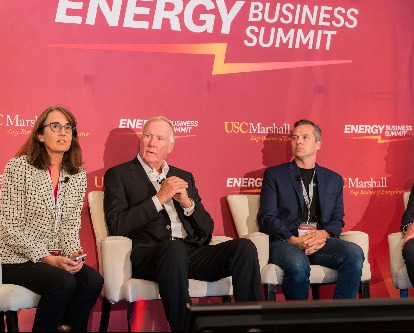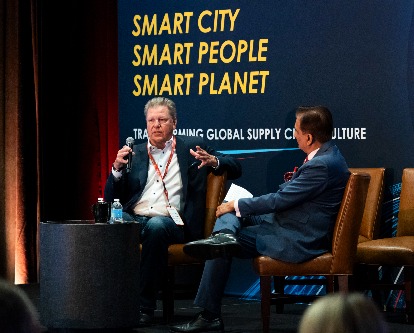For some people, it’s not just about range anxiety, it’s not just about the payment on the vehicle. It’s almost political, where you see a huge divide in the amount of liberals who would be willing to buy an electric vehicle or who own one and the amount of conservatives who would be willing to consider buying one.
How do you think people who see EV adoption as a critical issue bridge that gap?
HT: I think there’s a couple of things at play. There’s this question of political affiliation within the larger frame of polarization over the last decade. That’s a difficult issue to push against. If you have people who are hardliners on one side or the other, there’s not much you can do to push them.
There seems to be shifting in the middle. And by middle, I mean, people who aren’t necessarily strongly affiliated with either side and who see it more as a practical issue or who might shift their political allegiances or maybe not make it into a political question.
So part of that is just practical. If you offer the Ford F150 Lightning, then somebody who is buying that truck who might lean more conservative, might still buy that truck because it suits that person’s needs. The bigger issue is something that I’ve looked at quite a bit:
It takes a long time for people to adopt new technologies across various industries. And this is just one example of it. EVs have been commercially available since the 1890s. They lost the battle for what’s called “dominant design” in the early 20th century. You could have combustion engines, you could have electric, or you could have steam.
And they dropped from 30–40% of overall sales to 1%. And it’s only now more than 100 years later, that we’re into the single digits (and in some parts of the world double digits) for demand. That’s a huge shift. Part of that is practical. Part of that is financial, but a good deal of it is just having people look at an electric vehicle and not say, “I don’t know why I would even consider buying it” to saying, “This is kind of a cool thing. My neighbor bought it, my cousin bought it, my brother bought it. Maybe I’ll consider it.”
So it’s that larger shift in perception that underlies demand. That’s what’s gradually changing. And I think that will determine in the end whether the market is viable or not.
So let’s talk about China. They completely dwarf us in EV production and in sales. How do you explain that huge gap?
HT: This is partly speculation on my part, but I would say there are at least two factors that go into it. One is government policies, regulations, restrictions, and absolute targets that the Chinese government can put in, in a way that the U.S. government can’t. There are certain mandates and production requirements [the Chinese government] can put in. I don’t necessarily mean this positively or negatively. Because you can do much more within the confines of the Chinese Communist Party than you can in the U.S.
But there’s also been a huge amount of investment on the Chinese government’s part, which is partly what I think the Biden administration has tried to do over the last couple of years in a very, very different political climate and very, very different political structures. But they’ve also tried to invest very heavily. But if you’re the Chinese Communist Party, you can invest incredibly heavily in infrastructure.
I would point to two large scale factors. One is the political leverage that a less democratic government can push that [the U.S.] can’t and probably shouldn’t. But on the other hand, a huge amount of investment and capital investment that’s been put into [EVs] that also benefits both the government itself (because it makes a lot of the raw materials) as well as the people it’s trying to push in the direction of adopting more EVs
You talked a lot about how the Chinese government has a lot more leverage over its citizens. Do you see a difference in consumer philosophy in a place like China versus a place like the United States where maybe because of their political situation or culture, they’re a little bit more predisposed to make that behavioral change and try new technologies as opposed to in the United States?
HT: Well, I want to caveat this answer by saying this isn’t something that I studied directly. I’m coming at it more from the perspective of consumer and social behavior that I know much better.
But what I would say is [consumer behavior] is on a spectrum. You can wait for social behavior to change just based on trends, people’s long term habits, and cultural shifts. That’s at one end of the spectrum. It’s a much more passive or indirect move from one set of behaviors to another.
Or you can push it or mandate it. We can’t push or mandate things in the U.S., and again, that’s why we live in a country that’s democratic, right? We don’t want to do that.
On the other hand, something like the COVID-19 pandemic that we’ve all lived through has changed a lot of our behaviors in a way that no particular person or particular group or government mandated, but that we all needed to live by. For instance, you and I are on Zoom. We’re not meeting in person. Zoom adoption rates and virtual meetings, remote work have all increased.
What I would say is the difference between the two opposite ends of the spectrum comes down to something maybe as simple as the speed of the shift. It takes 30–40 years sometimes for people to go from doing X to doing Y. If you’re mandating or requiring people [to change behavior], politically and otherwise, perhaps from an authoritarian perspective, you can actually mandate people to change their behaviors. You’re simply accelerating what takes much, much longer.
But we’re also in a place in the world in 2023 and post-2019 and 2020 where we’re all changing social behaviors because we’ve had to. So I think we’re much more malleable, and there’s a reason why electric vehicles over the last two or three years have picked up whereas it’s taken 120 years for them to try to come back.
Is there anything that you wish more people knew about electric vehicles or about this issue?
HT: I’d say two things.
One, I want people to know that this is a century-plus battle to bring EVs to market viability. And we were there [120 years ago] even though the technology wasn’t quite there.
This is pre-lithium ion batteries. It’s other technologies like the nickel hydride batteries, lead acid batteries, a lot of which were still in use even in the 1990s when the modern rebirth of the electric vehicle took place. But it’s important for people to know that this is not a flash in the pan. This is not something that happened last year or the year before or five years ago.
The second point is that so much of this is about perception and education. The fact that lots and lots of people think this technology has only been around for five years, 10 years. I ask this to students and others all the time and one or two people may raise their hands and say it’s been around for a long time. But 90% of people in the room or more, will say this is a modern technology.
The second part of it is the education piece along with the perception. I think recent surveys suggest that lots of people have many misconceptions about EVs, starting with range anxiety. Most of us drive 30, 40, 50 miles one way at most, even in L.A. Any car that has 100, 150, certainly 200 or 250 mile range, will serve our needs. There are many, many misconceptions and preconceptions that people have.
I think this is what makes me the most confident about the direction that we’re headed — many of those are going the way of the dodo. Over the next three to five years or sooner, hopefully those preconceptions and misconceptions will go away. That will clear the way for people to make their own decisions about whether EVs make sense [for them] in a way that’s much more accurate, much more reliable, and much more credible than what we’ve had over the last decade.






